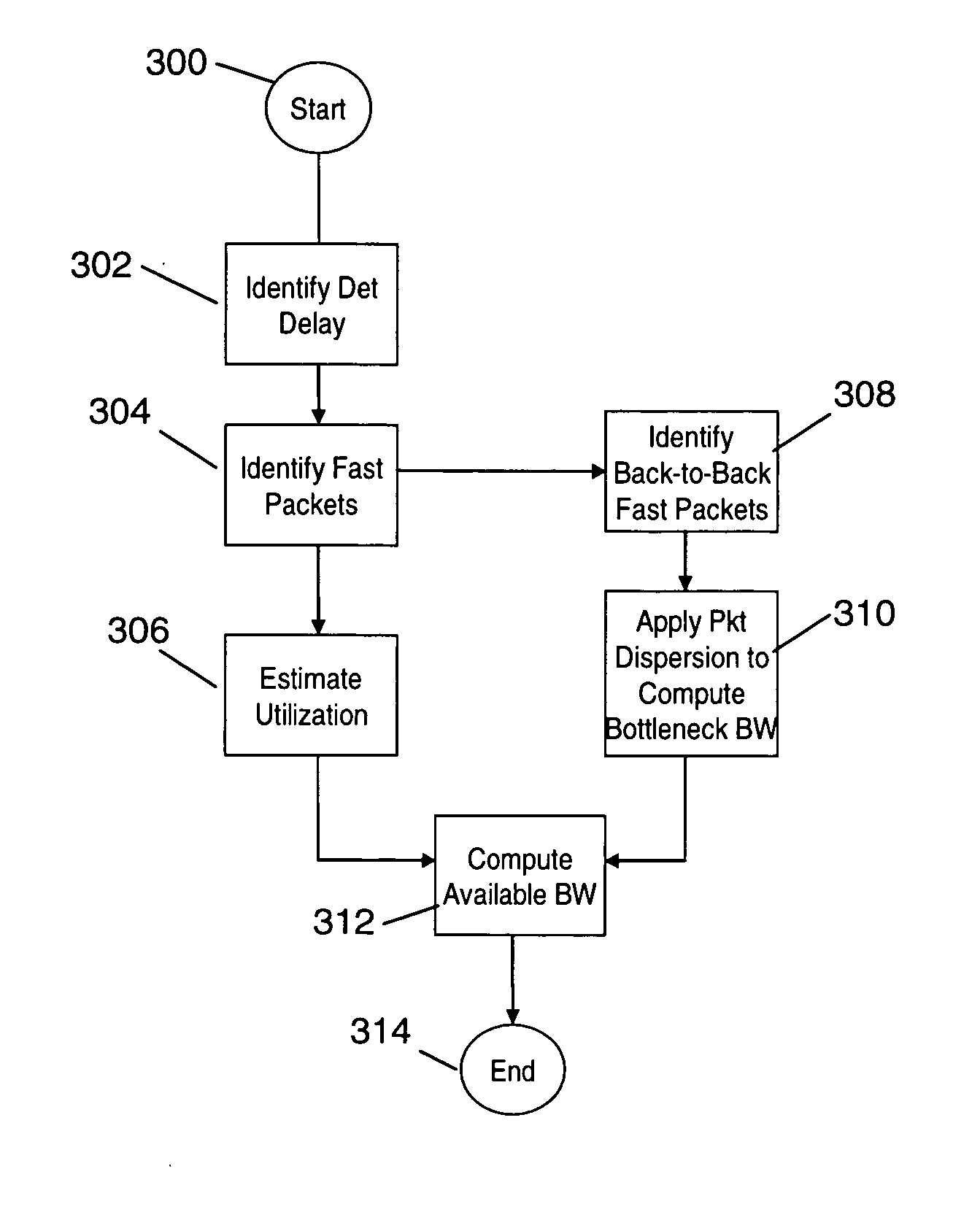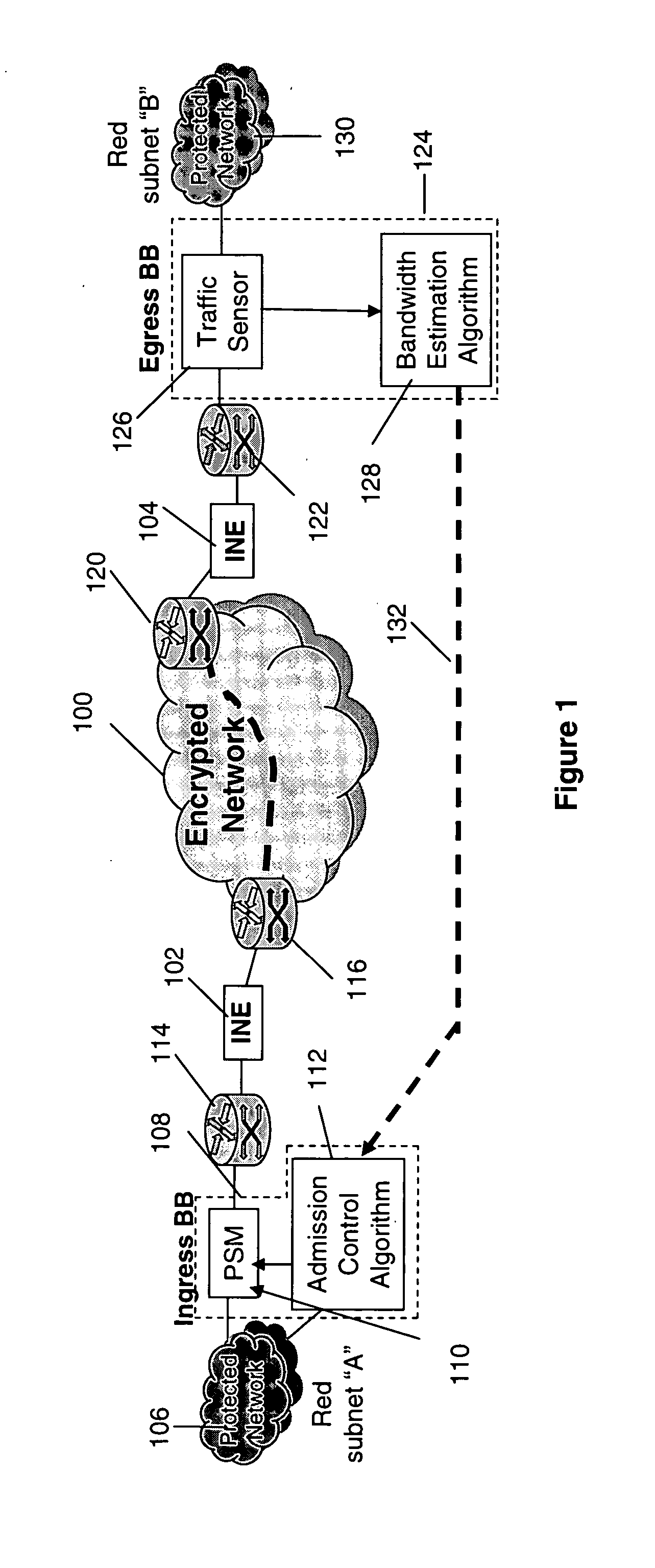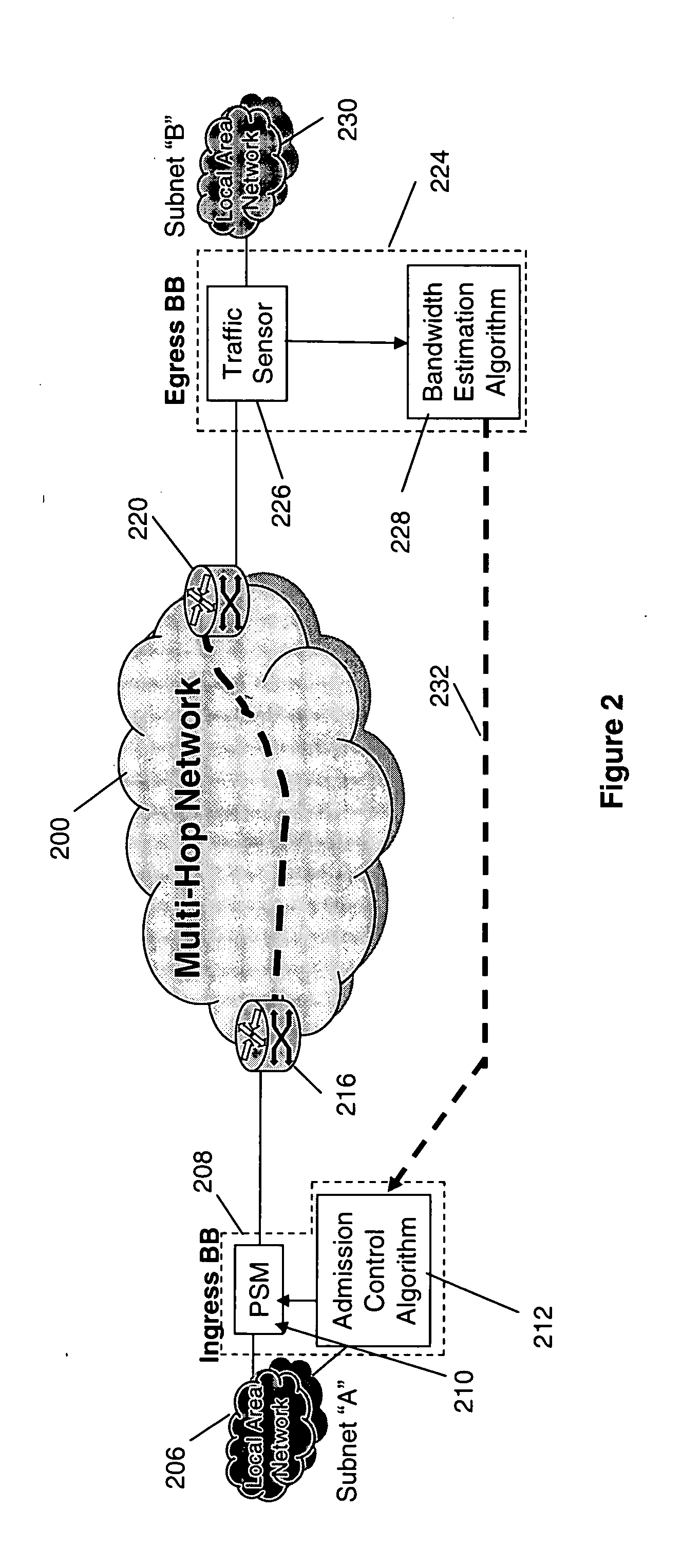Estimating available bandwith and enhancing narrow link bandwith estimations in telecommunications networks using existing user traffic
a technology of user traffic and telecommunications network, applied in data switching networks, frequency-division multiplexes, instruments, etc., can solve problems such as deterministic delay, satellite propagation delay, clock effect, etc., and achieve the effect of reducing uncertainty
- Summary
- Abstract
- Description
- Claims
- Application Information
AI Technical Summary
Benefits of technology
Problems solved by technology
Method used
Image
Examples
Embodiment Construction
[0016] Referring now to the figures and to FIG. 1 in particular, there is shown a schematic diagram of an edge-based bandwidth broker (BB) solution for QoS control in a battlefield network. In FIG. 1 the wireless links of the encrypted wide area network 100 represent the scarce network resource. However, because of the cryptographic boundary formed by the inline network encryptor (INE) pair 102, 104 situated at the ingress and egress points of the wireless network, respectively, the source-destination pair is unable to directly measure the available bandwidth for the end-to-end path.
[0017] In operation, packets are transmitted from a first protected network 106 (Red subnet “A”), through an ingress bandwidth broker 108 comprising a policing-shaping-marking (PSM) function 110 where an ingress timestamp is written into an 8 byte option field of IP header and an admission control algorithm 112. Admission control algorithms are known to those skilled in the art.
[0018] Admitted packets ...
PUM
 Login to View More
Login to View More Abstract
Description
Claims
Application Information
 Login to View More
Login to View More - R&D
- Intellectual Property
- Life Sciences
- Materials
- Tech Scout
- Unparalleled Data Quality
- Higher Quality Content
- 60% Fewer Hallucinations
Browse by: Latest US Patents, China's latest patents, Technical Efficacy Thesaurus, Application Domain, Technology Topic, Popular Technical Reports.
© 2025 PatSnap. All rights reserved.Legal|Privacy policy|Modern Slavery Act Transparency Statement|Sitemap|About US| Contact US: help@patsnap.com



